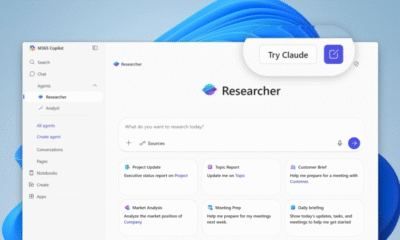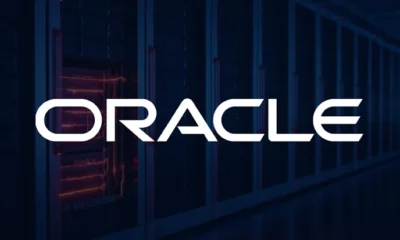Microsoft
Canada’s Tech Sector Gains Ground with U.S. Visa Fee Increase: B.C. Competes with Seattle and Silicon Valley

Will the Impact of New H-1B Visa Fees Drive Tech Companies to Canada?
President Donald Trump’s recent executive order has caused a stir in the tech industry, particularly among U.S. tech companies that rely on skilled immigrant workers through the H-1B visa program. The introduction of a new $100,000 fee has prompted discussions about whether tech companies will start looking to Canada as a more cost-effective alternative for employing AI talent. This shift could also potentially lead to more Canadians choosing to stay and work in their home country.
British Columbia, where major tech giants like Microsoft and Amazon have established a significant presence, is already positioning itself as an attractive destination for tech talent. Minister of Jobs and Economic Growth Ravi Kahlon recently emphasized the province’s commitment to science and innovation in light of the H-1B changes, inviting tech experts, innovators, and scientists to be part of shaping Canada’s new economy.
Canadian Prime Minister Mark Carney also weighed in on the issue, suggesting that the visa policy changes in the U.S. could result in fewer Canadians leaving to work for American tech companies. While Canada produces many skilled graduates in fields like AI and quantum computing, a significant number end up working in tech hubs like Silicon Valley and Seattle. Carney’s remarks hinted at a desire to retain more of this talent within Canada.
One of the key factors driving this potential shift is the substantial cost associated with the new H-1B visa fee in the U.S. Tech companies may find it more economical to bring overseas talent to Canadian cities such as Vancouver or Toronto, where operating costs may be lower.
Navigating Visa Options in a Changing Landscape
Despite the buzz surrounding Canada as a tech talent magnet, immigration experts caution that the impact of the H-1B fee may be limited. The fee applies only to new H-1B petitions and is borne by employers, not employees. Additionally, alternative visa options such as the USMCA Professional (TN visa) exist for Canadians seeking to work in the U.S., albeit without a path to permanent residence.
For non-Canadian and non-U.S. citizens working for American companies in Canada, options like the L-1A or L-2A visa allow for internal transfers under specific conditions, providing flexibility in navigating cross-border employment.
Balancing Competition and Collaboration
While the new H-1B fees may intensify competition between Canada and the U.S. for tech talent, ongoing collaborations between Washington state and British Columbia signal a commitment to regional innovation. The Cascadia Innovation Corridor, supported by key industry figures like Microsoft President Brad Smith, aims to foster cross-border partnerships and drive economic growth in the region.
This collaborative spirit extends to infrastructure projects like the Cascadia high-speed rail initiative, which received funding for planning future rail service connecting Seattle, Portland, and Vancouver. Despite uncertainties about future funding under the Trump administration, the shared goal of enhancing transportation links between the two countries remains a priority for stakeholders on both sides of the border.
-

 Video Games2 days ago
Video Games2 days agoGoku Takes on the Dragon Ball FighterZ Arena
-

 Video Games3 days ago
Video Games3 days agoTekken 8: Rise of the Shadows
-

 Amazon3 days ago
Amazon3 days agoNeil Young Takes a Stand: Pulling Music from Amazon in Protest of Jeff Bezos’ Support for Trump
-

 Cars1 day ago
Cars1 day agoRevving into the Future: Ferrari’s Plan to Unleash 20 New Models, Including Electric Vehicles, by 2030
-

 Tech News3 days ago
Tech News3 days agoSamsung Galaxy UI 8: Embracing the Big Free AI Upgrade
-

 Microsoft1 day ago
Microsoft1 day agoMicrosoft Integrates Anthropic’s Claude AI Models into 365 Copilot: A Deepening Relationship with OpenAI
-

 Security3 days ago
Security3 days agoCritical Vulnerability Exposed: Oracle EBS Targeted in Recent Cyber Attacks by Cl0p Hackers
-

 Microsoft3 days ago
Microsoft3 days agoEnhanced Copilot Features: Creating Office Documents and Gmail Integration





























